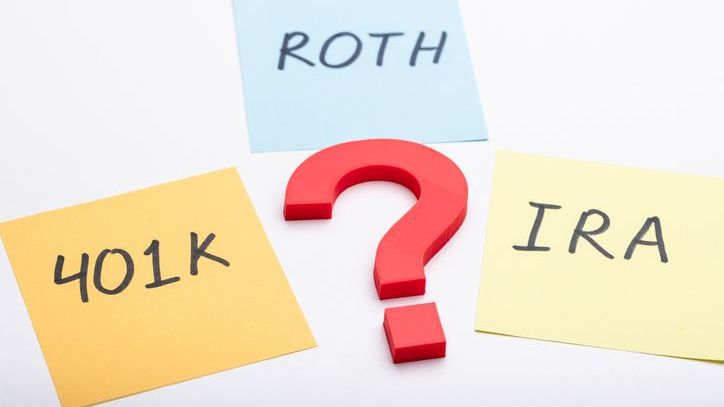In a previous article about Roth conversions, an advisor wrote: “For many folks, a prime time for Roth conversions takes place during the years after retirement but before Social Security and RMDs kick in. Those can be relatively low-income years during which initiating a conversion can result in a triple benefit. Those benefits are: lower tax bills, reduced RMDs and future tax-free growth.”
My question is based on what I thought the rules were for Roth contributions, which is that you must have earned income to contribute. How can a retiree roll funds into a Roth IRA without having any earned income?
– Mark
That’s a great question, and I get some variation of it often. Unfortunately, there is a lot of nuance to the rules surrounding Roth IRAs. The recent column on the five year rules highlights this point, too.
This can make following them more complicated and confusing than you might think. The answer to your specific question simply lies in understanding some subtle differences in terminology. While you need earned income to contribute to a Roth IRA directly, earned income isn’t required to convert a pre-tax account into a Roth IRA.
Do you have questions about retirement planning? Speak with a financial advisor today.
Roth Contributions vs. Roth Conversions

To be clear, your understanding of the Roth contribution rules is spot on. Contributions must come from earned income. Therefore, a retiree who is only collecting Social Security, pensions, annuity payments, interest or taking distributions from retirement plans cannot contribute to a Roth IRA (or a traditional tax-deferred IRA for that matter).
But Roth conversions and Roth contributions are not the same thing.
When you make a Roth contribution, you take money that’s already been taxed and direct it into a Roth account. There, it will grow tax-free and won’t be subject to required minimum distributions (RMDs), which start at age 73 (75 for people who reach age 74 after Dec. 31, 2032). A Roth contribution can be made with money you receive from a paycheck or money that’s your checking account. The key is you need earned income in order to contribute to a Roth IRA.
A conversion, on the other hand, takes money that’s already inside a tax-deferred account and moves it over to a Roth account. The “conversion” occurs because you pay income taxes on the money when you move it into a Roth account.
In order to do a conversion you must first have money inside a tax-deferred retirement account of some type, like a traditional IRA or 401(k), for example.
In short, the source of a Roth contribution is earned income. The source of a Roth conversion is a tax-deferred retirement account. (Roth conversions are just one type of tax-planning strategy that a financial advisor may be able to help you with.)
Limitations
While Roth contributions are limited in a number of ways, there are no limits whatsoever on Roth conversions.
For tax year 2025, the Roth IRA contribution limit is $7,000 for those under 50 and $8,000 for those 50 and older. There are no limit on the amount of money you are allowed to convert, however.
You’ll also want to keep the income limits in mind. If your earned income is too high, you cannot contribute to a Roth IRA at all. In 2025, that limit is $165,000 for single tax filers and $246,000 if you’re married and file jointly.
While not everyone can contribute directly to a Roth IRA, there is no income limitations on Roth conversions. Bill Gates could do a Roth conversion if he wanted to. (But if you need additional help navigating the rules surrounding Roth accounts, consider working with a financial advisor.)
Roth Accounts in Workplace Retirement Plans

A related issue that is often the source of confusion is the treatment of Roth accounts within workplace retirement plans.)
Often, retirement savers believe that the same income restrictions that prevent them from contributing to a Roth IRA also prevent them from contributing to a Roth 401(b) or Roth 403(b). However, that is not true. The Roth IRA income limits do not apply to designated Roth accounts within workplace retirement plans.
As a result, a single person who earns over $165,000 in 2025 could contribute up to $23,500 to a Roth 401(k), if their employer offers this account option. (If you need advice on how to split your retirement savings contributions between pre-tax and Roth accounts, consider talking it over with a fiduciary financial advisor.)
Bottom Line
Roth contributions and Roth conversions are not the same thing, and they are not bound by the same rules. Any amount you convert will be included in your taxable income in the year of the conversion, but then qualified withdrawals will be tax-free in the future. Roth conversions can be part of an effective tax-planning strategy, but you shouldn’t do them without careful analysis.
Tips for Executing a Roth Conversion
- A financial advisor may be able to help plan your Roth conversions. Finding a financial advisor doesn’t have to be hard. SmartAsset’s free tool matches you with up to three vetted financial advisors who serve your area, and you can have a free introductory call with your advisor matches to decide which one you feel is right for you. If you’re ready to find an advisor who can help you achieve your financial goals, get started now.
- Converting a large retirement savings balance into a Roth IRA all at once can have serious tax implications. That’s why you may want to consider a more gradual approach that sees you convert your pre-tax savings into a Roth account over the course of several years. That way, you can spread the tax hit more evenly, and potentially avoid jumping into a higher tax bracket.
Brandon Renfro, CFP®, is a SmartAsset financial planning columnist and answers reader questions on personal finance and tax topics. Got a question you’d like answered? Email AskAnAdvisor@smartasset.com and your question may be answered in a future column.
Please note that Brandon is not an employee of SmartAsset and is not a participant in SmartAsset AMP. He has been compensated for this article. Some reader-submitted questions are edited for clarity or brevity.
Photo credit: ©iStock.com/Cecilie_Arcurs, ©iStock.com/AndreyPopov
